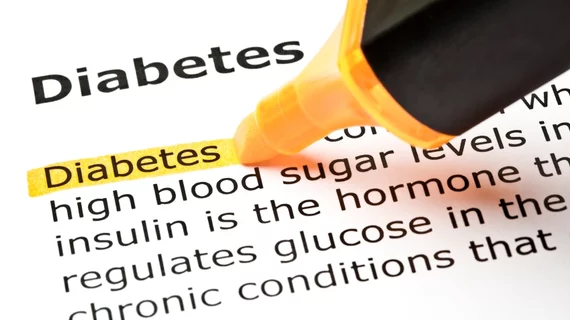Diabetes deaths trending down with better control of CV risk factors
Diabetes mellitus continues to be linked to higher all-cause and CVD mortality in patients living with the disease, according to work published in the Journal of the American Heart Association Feb. 19. But some of that risk could be mitigated by controlling cardiovascular risk factors, and diabetes-related deaths are down overall.
Diabetes and CVD share a strong, well-established connection, first author Sridharan Raghavan, MD, PhD, of Rocky Mountain Regional Veterans Affairs Medical Center in Aurora, Colorado, and co-authors wrote. Diabetics see a three- to four-fold increased risk of CVD mortality compared to non-diabetics, and MI is the leading cause of death in the population.
“In Europe, recent studies using clinical registry data have provided contemporary estimates of diabetes mellitus-related mortality in the context of national health systems in several European nations,” the authors wrote. “These studies demonstrate improved but persistent diabetes mellitus-related excess mortality despite improvements in CVD risk factor management.”
Raghavan and colleagues launched an analysis aimed at updating current estimates of diabetes-related mortality in the U.S., since the data we often reference dates back decades. The team retrospectively studied 963,648 adults in the U.S. Veterans Affairs Healthcare System from 2002 to 2014 and compared the association of their diabetic status and hemoglobin A1c (HbA1c) with all-cause and CVD mortality.
According to the study, 34 percent of participants had diabetes at baseline. After an average eight years of follow-up, the researchers found diabetics had a 16 percent higher risk of all-cause mortality and an 18 percent higher risk of CV mortality when compared to non-diabetics. Individuals with diabetes saw an average 7 deaths per 1,000 person-years, while that number for non-diabetics was 3.5 deaths per 1,000 person-years.
Raghavan et al. reported the age-, sex-, race- and ethnicity-adjusted hazard ratio (HR) for diabetes-related mortality was 1.29, which dropped to 1.18 with adjustment for CVD risk factors and 1.03 with adjustment for glycemia. In diabetics, CVD mortality increased when HbA1c exceeded 7 percent, while an HbA1c of 6 percent to 6.9 percent was associated with the lowest mortality.
“Diabetes mellitus remains associated with increased mortality, but the association is attenuated by cardiovascular risk factor control,” Raghavan and co-authors wrote. “HbA1c is associated with mortality irrespective of a causal mechanism, so it remains an informative marker of risk for patients with diabetes.”
In a related JAHA editorial, David Aguilar, MD, MSc, of the University of Texas Health Science Center at Houston, said Raghavan et al. should be congratulated for their work, but it presents some limitations that are hard to ignore. For example, Aguilar said, the study population consisted solely of veterans with a high burden of comorbid baseline conditions, including cancer and prior CVD.
“This cohort represents a higher-risk group with significantly greater rates of all-cause and cardiovascular mortality than other studies, and it is possible that the higher rates of death, including in those without diabetes mellitus, could have attenuated the relative hazard that was seen in this cohort compared with previous studies,” Aguilar wrote. “Similarly, deaths that occurred within the first two years were censored.”
Still, he acknowledged the study is an “important contribution” to a public health issue, and said the overall lower prevalence of diabetes-related mortality compared to the 1980s and 90s is probably the result of increased public awareness of diabetes, CV risk factors and innovative treatments.
“The past several decades have seen much-welcome progress in reducing the cardiovascular-associated burden of diabetes mellitus,” Aguilar wrote. “Recent data from clinical trials provide even greater hope that we can further reduce the residual risk attributed to diabetes mellitus.”

